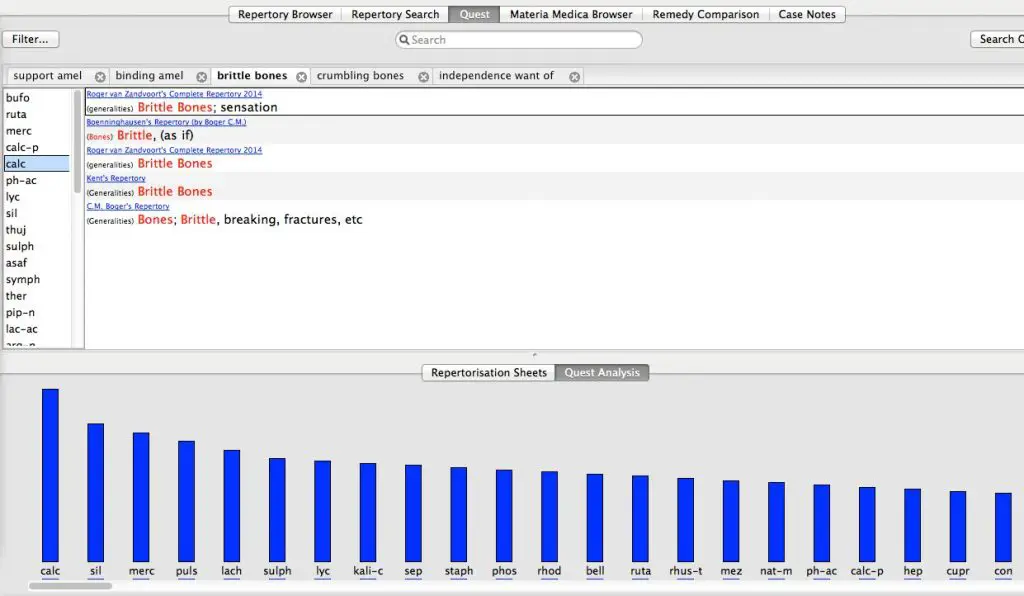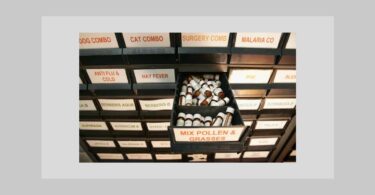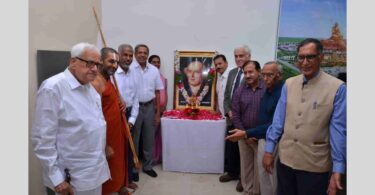
Shilpa Bhouraskar
Since the conception of homoeopathy, it has evolved into a range of different methods and approaches. When I graduated as a medical practitioner in Homoeopathy, it was completely overwhelming and frustrating to find different practitioners prescribing different remedies for the same patient. I was ready to give up. It was one of my most challenging times when I started in 1997.
But over the last 16 years having worked with thousands of patients in two different continents from the farmers in rural India to the corporates in Sydney Australia, I found my own way of success. The breakthrough for me was when I decided to match a specific approach in Homoeopathy for every individual patient. It took the concept of individualisation in Homoeopathy to a whole new level.
For simplifying the process of using these different approaches in practice, I have found a very easy to use template, which I’d love to share with you today. I call it the Stages Template.
I’ve classified the different approaches since the conception of homeopathy into four different stages. These four stages, for me, represent the different depths of working on a particular disease condition. Depending on your need, your patient’s need and also their disease conditions, you can actually use any of the different approaches which fall within a particular stage.
I will explain the Stages Template using a practical clinical example of a case of OsteoArthritis. To begin, how do you could look into a case of a patient presenting with osteoarthritis at all these different stages?
Stage 1:
At Stage 1, you are looking only at the diagnosis. Therefore, all of the homeopathic approaches which look at diagnosis of a case, and all the remedies which are applicable for a particular homeopathic diagnosis, fall under this stage.
If you take a case of OsteoArthritis at Stage 1, you would gather this information from your patient:
The patient may get an x-ray that shows the Arthritic changes of the knee joint. He or she may report stiffness and the pain in the knee. There may be signs of inflammation, or you may see an erosion of the cartilage in the reports, depending on the depth of the inflammation and the condition.
Now, homeopathically at this stage, you will find many different ways to analyse this case and work out a remedy. Repertorising such a case is not a particularly useful thing to do, however, because when you repertorise – if you look here where I’ve used three basic common symptoms – you will find you have roughly hundreds of remedies that fall into this category.
For this particular stage, I have found it most useful to refer to authors and books who have written at Stage 1. Dr. Richard Hughes has written The Manual of Pharmacodynamics. It is immensely helpful because he has differentiated remedies with respect to their pathophysiology.
In an extract from his book, he mentions that, in case of an Arthritis, if you have simply synovitis, then these remedies could be useful: Bryonia, Pulsatilla and Hepar Sulph. If there are ulceration and pain associated with that in the cartilage, you can use Merc Cor. If the disease has affected the bones, then the remedies that work on the bones are Calc Flour and Silicea.
Effective potencies at this stage are very low. You could possibly use a tissue salt, 6X. Alternatively, you can use potencies lower than 12C, wherein there is actual ‘material’ in the remedy of the original substance. Some of these remedies could have toxicological action that show similar damage at the local area.
Stage 2:
If you’re looking at Stage 2 for the same case and the same patient, you will be able to gather more information that is peculiar at the local organ or system. You might get two or three peculiar symptoms related not to the disease condition, but to the individual, that are expressing locally.
For example, you have stiffness and pain, but now the patient can describe the pain as being a bit ‘sore and bruised.’ ‘Aggravation walking and moving,’ is also a common modality, but now he or she mentions ‘cracking in the knee’ when walking. However, instead of heat with the inflammation, there is a peculiar ‘coldness of the knee when you touch.’
Now, these are quite peculiar local symptoms, and not every person with arthritis will have such symptoms. If you can gather information at this deeper Stage 2, then what you are looking for are the therapeutic approaches in Homoeopathy. At the same time, you can use the extra information and look at the repertories as well. One of my favourite approaches at this stage is using the Boenninghausen Approach.
This is my Boenninghausen repertorisation I’ve worked out with two or three of those peculiar symptoms, such as ‘pain, sore/bruised, knees,’ ‘cracking in the joints,’ and ‘coldness of the knee.’ You can see that the number of possible remedies has actually decreased. You now have perhaps ten or twelve remedies that pull up, and you now can choose a remedy from only these ten or twelve remedies as compared to the hundreds before. So, it does become a bit easier.
The books I use at this stage would be all the therapeutic or keynote books, for instance, Allen’s Keynotes, Leaders in Homoeopathic Therapuetics by Nash or Boger’s Synoptic key. These differentiate remedies with respect to a few peculiarities at the local level. For example, in Ledum, there is ‘coldness to touch,’ but it is ‘better by immersing the joint in icy cold water.’ Alternatively, in the case of Arsenic, it is ‘better by hot applications.’ Once again, you can see that these peculiar modalities and concomitants, so to say, help you understand which remedy might be best to choose for your patient.
If Rhux Tox is indicated, then you have ‘muscular pain’ or ‘pain in the tendons’ rather than the joint itself, and it has the peculiar modality of ‘aggravation first motion’ and ‘better by walking continuously.’ Whereas if it is Calcarea, then it is more about ‘ascending or climbing up stairs’ and ‘lifting heavy things.’ These peculiar keynotes can differentiate your remedies and help you pick the right one. If you are looking at potencies, you can go a bit higher. Therefore, you are looking at around the 30C mark if using the centesimal scale. These potencies do have to be given very frequently, and all of this can help the patient relieve the pain temporarily for a few days.
Stage 3:
Now you can go deeper and gather symptoms at Stage 3. At Stage 3, you’re looking for the individualising symptoms of a case that connect the physical and the mental symptoms — the Generals of your case. Hence, Stage 3 is about using approaches that look at the person’s mental and physical makeup, constitution, and diathesis to actually prescribe the homeopathic remedies.
At this stage, if we’re pursuing the same case, the patient may say they’ve always had a tendency to ‘weakness of the bones and muscles,’ and a tendency to have ‘easy sprains in the ankles or the knee joints.’ They need banding and always need support. The ‘joints, the pains are always worse in the damp cold weather,’ or they really ‘cannot tolerate any cold.’ He or she may be quite ‘anxious’ and ‘very, very sad, especially when the days are a bit more cloudy.’ There is ‘lack of appetite with that’ and also ‘anxiety of being alone.’
All this has begun since the patient lost his or her partner. Therefore, a specific psychosomatic relationship exists wherein there has been grief since the death of the partner. Since then, the knee has really started playing up. A few things cause anxiety and palpitation, or profuse sweating. Now as you see, you’re getting something more about the individual.
At this stage, when you start looking at cases and begin repertorising, you put in all these mental and physical generals.
Hence, if this is my Kentian repertorisation, then I have ‘pain, extremities wet weather aggravates;’ ‘sadness, alone when;’ ‘Fear of being alone;’ ‘Fear of being in the dark;’ ‘Appetite wanting;’ ‘Profuse perspiration;’ ‘aggravation, cloudy weather;’ and ‘Palpitation. heart; Anxiety.’
If you look at these symptoms, you can see that the remedies coming up have been precise. They are quite peculiar, as indicated on the individual. Many experienced homeopaths at this stage can spot the indicated remedy or the so-called constitutional remedy. They would differentiate the remedy with respect to the miasm in this case because the miasm is quite clear here.
If you are looking at Kentian miasmatic analysis, you’re looking at a case with weakness of the joints and the bones, and tendency to sprains and aggravation in damp weather. Therefore, you are looking at a sycotic miasmatic basis. The remedy you choose would have the sycosis as a part of its picture, which can actually help pinpoint the remedies quite clearly. Some people might not need any repertorisation for this case. However, most importantly, the number of remedies you are looking for has now come down to only three or four.
Stage 4:
Next, let’s look at what happens a bit further now that you start looking at Stage 4. At stage 4, what you are seeing is the level of the vital force beyond the mind and body symptoms. You’re looking at the core disturbance within the person at the level of the sensation and the source before it forms symptoms. This would be the energetic disturbances of the patient that may be expressed in different ways. It may express in the form of their dreams; in the form of their creative pursuits, their hobbies, their interests; perhaps their art. If they have a specific hobby of music or art, it could be expressed in the form of energetic patterns at that level as well.
Contemporary homoeopaths like Dr Sankaran have developed this very interesting approach just in the last decade. If you take the same case and understand it at a much deeper level, you can start finding a common theme. Physically, this patient is saying the joints feel very weak, and they can break quite easily, and they require external banding. Mentally, she says, ‘I need support. It’s really hard since my husband has died, and I just feel that he was my major support emotionally and morally.’ So she has anxiety and fear; she wants to be always with the family; she’s very frightened if the children are away; she fears something might happen to them, and fears she might lose them, too. She had a terrible nightmare where she fell down from a high cliff and was dashed to pieces, so included was some type of fear of breaking up easily.
Hence, while the chief complaint reveals that the knee joint is quite weak and brittle, there exists an innate weakness that is not just locally physically, but also mentally and generally. The entire state requires extra support and can break very easily, and requires binding and banding. She has a feeling of not having enough resistance to sustain pressure, and it is physically manifested by aggravation to lifting heavy things. So the ‘brittleness’ is expressed at different areas or ‘points of entry.’ At this point, you realise the remedy should include brittleness at the very source along with a need for support.
At this point, what complements is an understanding of the kingdom analysis at the source. Therefore, you are looking at the case in a different way. You don’t repertorise in the classical way at this stage. Traditional Repertorisation is something that worked quite well at Stage 2 and 3. However, now you’re looking at a completely different set of books that talk about common themes of different kingdoms, classifying remedies into different subkingdoms, and are getting the language of this source level. Now a completely new Materia Medica opens up for you.
Let’s look at the kingdom and subkingdom that cover the problem with structure and breaking of structure. In this case, I’ve also tried to look at the different sensations and source words to see if there is something in the proving language directly. I use the Quest Analysis in the HomeoQuest Software to do so. It helps analyse the keywords of the patient directly from the provings in the Materia
Medica.
I’ve put in ‘brittle bones;’ ‘binding ameliorates;’ ‘crumbling of bones;’ ‘independence, want of;’ and ‘support ameliorates’ to see if groups, kingdoms or subkingdoms of certain remedies come up. Here you can see Calcarea Carbonica is coming up quite strongly. Now let’s also confirm what we find using the sensation kingdom analysis.
The issue here is about the structure, which points to the mineral kingdom. Here is a theme of the compound, because the patient needs something or someone to gain stability. There is anxiety when there is a loss of structure and a need for something to provide that stability. According to the periodic table sensation analysis, issues around strength and stability belong to row 4. The issues of separation from someone belong to row 2. Further issues of weakness and doubt about the structure belong to Column 2. Also, there is anxiety about ‘Can I be on my own or can I not be on my own?’ This is Column 10.
All these different themes come together from analysis of the rows and the columns that contain the elements that make up this mineral and this particular compound. You find the remedy that comes up quite clearly is, again, Calcarea Carbonica. Hence, not just do you find confirmation through the proving in the Materia Medica, but also through the kingdom analysis. However, it is important to note that the double confirmation is possible because it’s a well-proven remedy.
Now let’s go a step further:
If you’ve come this far and you’ve confirmed the remedy at the fourth stage, you could now look back and then look at every stage. You’ll find that Calc Carb was one of the hundred remedies at Stage 1. It was also one of the remedies at Stage 2 in that group of ten or twelve remedies. The pool of remedies grew even smaller once you began looking at the remedies in repertorization at Stage 2. The Materia Medica matches the constitutional picture of Calcarea Carbonica. Then finally at Stage 4, the source is confirmed. So the same remedy just became continually clearer as we moved up the stages. That’s the beauty of confirming your prescription at different stages.
That could also be the most effective remedy for the patient. It could give a so-called ‘ideal cure,’ which means you have the benefit not just of relief at the local level, but also the whole state changes. She becomes much more confident; the grief settles down; the dreams are no more frightening; the anxiety, the palpitation – all those things minimise through the process. It is not something that happens overnight or in a month, but is a process that takes a few months as the whole state unfolds. That is exactly the so-called ‘ideal potential’ in homeopathy.
But wait! That is not what the Stages template is all about. This does not happen in every case. It was wonderful for this patient’s journey. So in this particular case, you actually confirmed the prescription at all the four stages. Hence, you could provide the single remedy Simillimum. Having said that, not every person can travel to every stage. Most have many stops in between. Let’s suppose you could gather information only at Stage 2 because he or she could not give any more information at Stage 3 and beyond. You could now either work with an approach at Stage 1 – and provide a combination of tissue salts such as Calc Fluoricum or Silica with an affinity for the bones and cartilage – or you could use the information at Stage 2 and give a therapeutic prescription. You also could use the repertorial analysis and make a choice from those ten or twelve remedies.
So let’s say you prescribe Rhus Tox. It doesn’t mean the remedy will not work. In many cases, it will help minimise the local pain and give her enough relief to be able to have lesser stiffness and less inflammation. In many cases, a remedy that does not cover the general state at Stage 3 and 4 may work as a partial Simillimum. However, this is not the end of the road. When the case stagnates, you might need to go a bit deeper and find a complementary remedy to Rhux Tox to match at Stage 3 or 4. In some other cases, you could use an intercurrent, anti-miasmatic nosode.
In some other cases a remedy is chosen using an approach at Stage 3, but may not match the organ pathology at Stage 1. In this case again it works as a partial Simillimum. Surprising but true. So now a complementary remedy using an approach at Stage 1 to cover the organ affinity is necessary to complete the cure.
So we have all sorts of cases. Some that need just a single remedy and most that need a series of remedies through different layers and stages. But the outcome is similar. Therefore, as you can see, there are many ways to work through a case. It is all about following your patient’s individual journey and needs. The Stages Template gives you the perspective to recognise where your patient is at and use the best of the entire spectrum of homoeopathic tools and resources. It will help you make the best choice for your patients and find the most efficient treatment protocol and strategy, depending on your skill set.
I think that has been one of my biggest strides in learning these last sixteen years of my practice, that of being able to choose a strategy according to the patient’s needs. It has been an extremely satisfying process clinically, not just for me, but also for thousands of my patients and students. I hope sharing this might help you work similarly with your patients, and benefit your practice as well.
I’d love to hear about what you think about this.
- What are your favourite approaches?
What works for you in your clinics?
http://apps.homeoquest.com/blog/homeopathic-case-management/











Glad to see you here, Dr. Shilpa. Your stages approach had been a revelation to me. Before reading about it, I used to get furious with people that didn’t give me a plethora of symptoms involving mentals, emotionals, physicals. I felt like taking off my belt and spanking them.
DEAR DR,
I FULLY AGREE WITH YOUR METHOD OF TREATMENT. IT IS NO USE TO QUESTION TOTAL HISTORY IN ALL CASES. MOREOVER MOST OF THE PATIENTS GET BORE WHEN WE ASK SO MANY QUESTIONS. THEY THINK THAT SO MANY DETAILS HAVE NOTHING TO DO WITH THEIR AILMENT. THEY RUN AWAY. IT IS BETTER TO PROCEED GRADUALLY TOWARDS KNOWING INTENSIVE AND EXTENSIVE DETAILS IN A PARTICULAR CASE OF LONG ILLNESS
great- the right approach to any case to reach the perfect medicine.. your approach will actually ease a docs work on deciding what to give to the patient & will help in accurate curing… God bless…
This is the beauty of homoeopathy if the medicine is similar to some extent it will work to some extent whatever may be the approach but best judgement is application of right approach at right at right time depending upon the induviduality of the case. ———Good effort by the author.